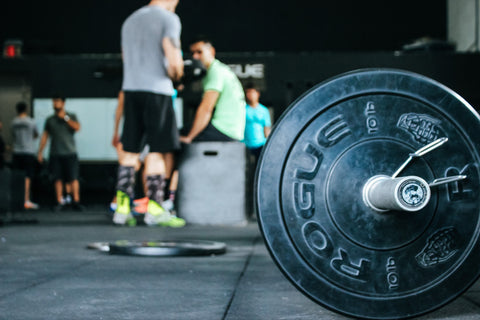Posted on 10 April 2018


How does a diet that allows you to enjoy cookies, ice cream and pizza, the odd glass of red and even a Saturday-night takeaway sound to you? No, not all at once – let's be realistic! The macro diet, also called flexible dieting, throws away the notion of calorie counting and instead focuses on counting macronutrients – the food groups that our bodies actually need to work. These are fats, proteins and carbohydrates, and our body needs all three in the right ratio to perform at its best, stay well, see training gains and drop excess weight.
When you can get your macros balance right, you can do your regular weightlifting, CrossFit, running, or sports workout, and then still see the gains that you want while enjoying 'treats'. The guiding principle is IIFYM (If It Fits Your Macros).
This flexible dieting approach has been used by fitness professionals for years and it can be extremely effective. At heart, it recognises that calories are not equal in value. So, 100 calories of lean chicken will not be used by the body in the same way as 100 calories of chocolate. By moving away from simple calories and towards optimisation of macros, your body will start to lean out and perform at its best and you'll enjoy a diet that you can stick to for the rest of your life. Crucially, macro eating takes away the notion of 'good and bad' foods and also helps to prevent you from getting bored.
Take carbs, for example. They've become the enemy in recent years, but if you are a regular exerciser, they’re essential for energy. However, if you're a desk-based pen-pusher, a diet high in carbohydrates (even 'low calorie') will become a problem. The body uses fat when it's resting but switches over to carbs when you train. This means that, while not training, you should focus on fats and proteins but bring out the carbs and proteins together when you’re training hard.
Working Out Your Macros
The important bit is working out what your macro ratio actually needs to be. To do this, calculate your basic metabolic rate (BMR) and then adjust it for activity. Then you'll have a target for daily calories, which can be split into your fats, proteins and carbs. Go online to find tools to help you do this or find a personal trainer or nutritionist who can get you started with the calculations and split that you need to take your macros approach forward successfully.
Translating Calories into Food
Remember, your body has no notion of good or bad foods; it just needs those three groups in the right proportions. So, work out what your macro goal is and then choose foods accordingly using an app such as MyFitnessPal to help you track food and make calculations. It will be time-consuming at first, but you'll rapidly become a pro at assessing your macros. Most people looking for fat loss will aim for 40 per cent carbs, 40 per cent protein and 20 per cent fat. This allows you to retain your hard-gained muscle mass, while allowing your body to shed fat.
If you're looking to bulk up, your macro split will be different – and so will your exercise. The same applies if you are endurance training, and in this instance, your macro split may need to adjust again. Work with your trainer to assess your goals and calculate your macro split accordingly.

The Keto Diet
This is a big trend at the moment and it courts as many ecstatic followers as it does controversy. If you are planning to do keto, then you can use a calculator such as KetoDiet Buddy for a split that is 73 per cent fat, 21 per cent protein and 6 per cent carbs. Some people do keto for medical reasons. Check with your doctor before you plan a keto diet and only do it for a short period of time. Remember that the body composition changes that you see are likely to be predominantly water loss. Equally, a strict reduction in carbs may make it challenging for you to train or feel energised.
What Do You Actually Eat?
So you've done your macro maths, but now what? Know that this isn't a signal to eat junk around the clock. Your body also needs vitamins and minerals found in wholefoods, along with fibre. So, ensure that 80 per cent of your food comes from nutritious sources and allow the remaining 20 per cent for treats.
Ready to try macros? Then get your app of choice ready, follow your favourite influencers on Instagram, find a supportive community at your gym or online and go chase those results! Good luck, and remember – If It Fits Your Macros, then that slice of pizza will no longer be out of bounds. Bliss!
Tikiboo Blogs
We upload help and advice blogs every week so check in for more help and advice on fitness, food and fashion.

0 comments